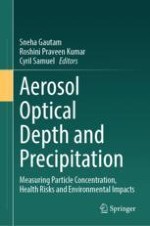2024 | OriginalPaper | Chapter
The Effect of Additives on Particulate Matter Emissions from Biomass Combustion
Author : Zuhal Akyürek
Published in: Aerosol Optical Depth and Precipitation
Publisher: Springer Nature Switzerland
Activate our intelligent search to find suitable subject content or patents.
Select sections of text to find matching patents with Artificial Intelligence. powered by
Select sections of text to find additional relevant content using AI-assisted search. powered by
